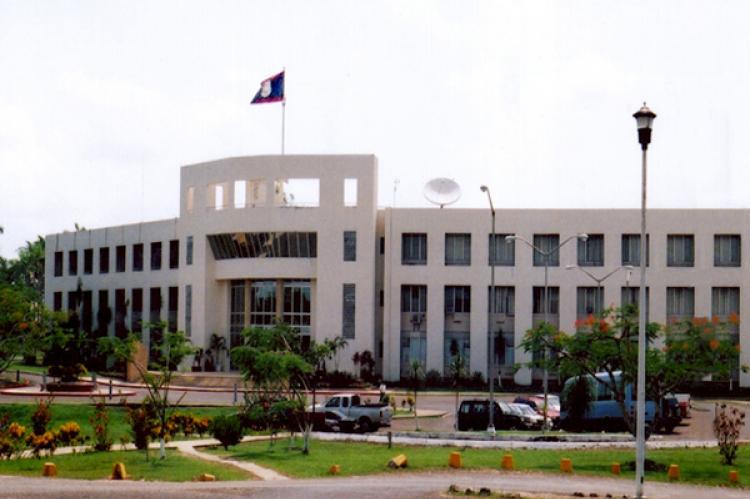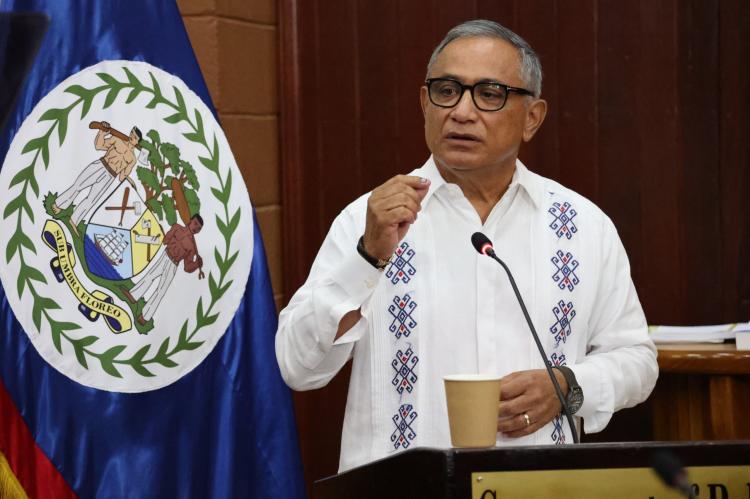“When the Tariff Tsunami Hits: Small Island States and Belize Will Bear the Heaviest Blow”
📰 NATIONAL PERSPECTIVE BELIZE
By: Omar Silva – Editor, National Perspective Belize
Belize City: 12th April 2025 Edition
As the world watches former U.S. President Donald Trump’s renewed push for a universal tariff regime, small island and developing states, especially those in the Caribbean, are bracing for economic aftershocks that could rival or even surpass those of the 2008 financial crisis. For Belize, a country already in the grip of high inflation, frozen aid flows, and a spiraling cost of living, the forecast is nothing short of economic turbulence.
A Pegged Currency in a World of Floating Risks
Belize is one of the few remaining countries with a fixed exchange rate: BZ$2 to US$1. This currency peg, originally designed to ensure stability and confidence, now acts like a tight noose in a global environment where inflation in the United States is rapidly exported into the Belizean economy.
Trump's proposed tariffs—ranging from 10% to 60%—on all imports into the U.S. will create global supply chain disruptions, cause price escalations, and provoke retaliatory trade wars with major exporting economies. And because Belize imports nearly 80% of its food, fuel, medical supplies, and manufactured goods, any inflationary uptick in the U.S. is automatically mirrored in Belize, often magnified by logistical and tariff pass-throughs.
The PUP Government’s Frozen Aid and Vanishing Lifelines
The Briceño administration has already been hit by the suspension of over 40 foreign aid-supported projects, including those financed through bilateral assistance and technical cooperation.
Most notable is the $125 million MCC Compact, signed with fanfare in 2024, which is now on indefinite hold. This funding was earmarked for post-secondary education reform, energy cost reduction, and inclusive economic development. With the aid frozen, so too are the hopes of thousands of Belizean youth and entrepreneurs banking on those initiatives.
Belizeans now face a government paralyzed by dependency, unable to fund transformative projects, yet unwilling to break free from the shackles of imported inflation and politically-motivated foreign assistance.
What’s Coming for Belizeans? A Perfect Storm
- 🚨 Steeper Price Hikes on Essentials
With U.S. and global inflation rising from tariff wars, Belizeans will pay more for:
- Food imports like wheat, rice, cornmeal, and canned goods.
- Building materials like cement, iron, and PVC products.
- Consumer electronics, school supplies, and fuel.
- 💡 Higher Energy and Transport Costs
- As fuel imports (largely refined in the U.S. or priced in U.S. dollars) rise, expect:
- Higher bus fares, electricity bills, and water delivery charges.
- Rising prices in taxi, food delivery, and freight logistics.
- 🩺 Healthcare System Strain
- Medical imports (gloves, antibiotics, vaccines) will become scarcer and costlier.
- Government clinics already suffering from budget cuts will face further shortages.
- 📉 GDP Shockwaves and Recession Risk
- Slower growth, less investment, and higher cost of operations for Belizean businesses.
- Risk of layoffs in sectors like tourism, retail, construction, and even education.
- 📈 Runaway Inflation with No Monetary Escape
- With no capacity to adjust interest rates or devalue the currency, Belize remains trapped in imported inflation.
- The cost of living, already high since 2020, could escalate by another 15–25%, depending on tariff severity and duration.
A Government Without a Cushion, A People Without Relief
Belizeans are left to grapple with skyrocketing prices, stagnant wages, and a government that offers no economic plan beyond slogans like "Plan Belize." What began as a political promise in 2020 has crumbled into fiscal confusion and dependency, as the PUP administration failed to anchor its governance in economic self-reliance.
The Briceño government now finds itself cornered—unable to fulfill basic commitments, unable to absorb the cost of inflation, and unwilling to pivot toward regional production or self-sufficiency.
A Call for National Awakening
Belize must now rethink its economic architecture and foreign policy alignments. It must ask:
Why haven’t we diversified trade away from the U.S. and aligned more closely with Mexico and Central America?
Why does Belize, with land and labor, import 80% of its food and nearly all of its fuel?
Why is there still no national manufacturing plan, nor a push for energy independence or value-added production?
If Belize continues down this path, the next economic domino to fall will be the livelihood of every Belizean family.
Conclusion: The Tariff Is Only the Match. The House Was Already Dry.
Trump’s universal tariff proposal is simply the latest external shock—but the cracks in Belize’s economy have been showing for years. High inflation didn’t begin with tariffs. It began with poor planning, chronic import dependence, and a political class content with foreign dependency as long as it sustains their own power.
Belizeans deserve better. They deserve sovereignty. They deserve transformation. And they must demand it—before the cost becomes unbearable.
- Log in to post comments


